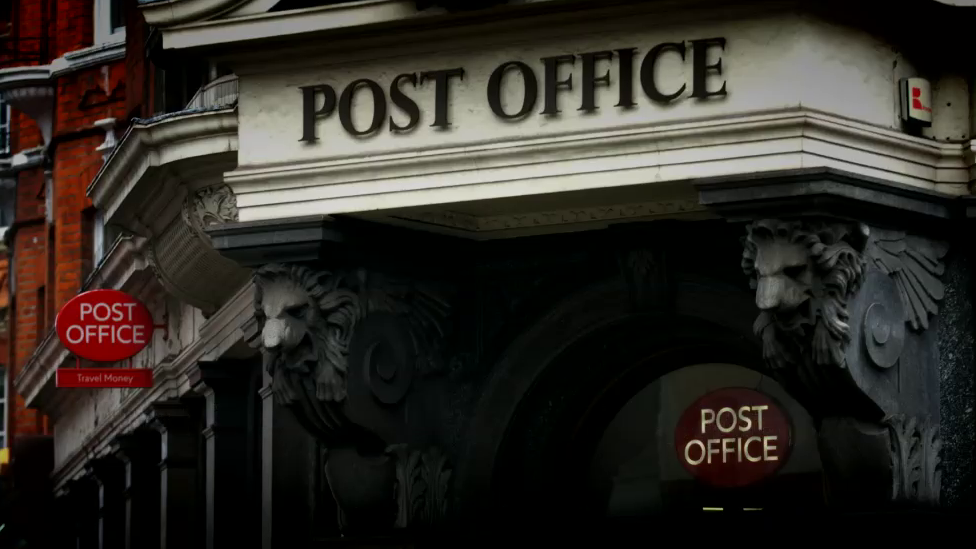Cumbrian author records rural postal routes of the past
- Published
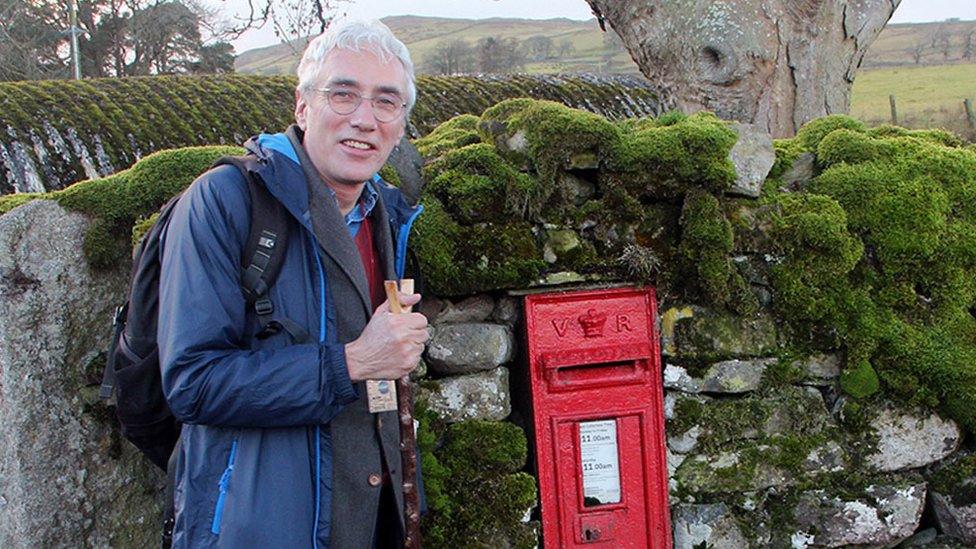
Alan Cleaver is on a mission to revive Britain's rural postal paths which have fallen out of use
Alan Cleaver has a passion for the old footpaths once used by rural postmen and women all across Britain. By retracing and recording them, he hopes to save the paths' history from being forgotten.
The tracks and trails once traipsed by legions of postal workers traverse moors and fields, over streams and hills, connecting communities.
Postmen and women could walk up to 18 miles a day delivering letters, parcels, newspapers, medicine and groceries.
Their efforts should not be forgotten according to Alan, a journalist-turned author from Whitehaven in Cumbria who has been researching the routes and preserving their stories for posterity.
"You're left full of admiration for these people out walking in all weathers," Alan says.
"A lot of them are dying off now and the records have been lost - so I think this is the perfect time to record the routes and make sure that they do survive and also the history of the people who did the rounds and delivered the post."
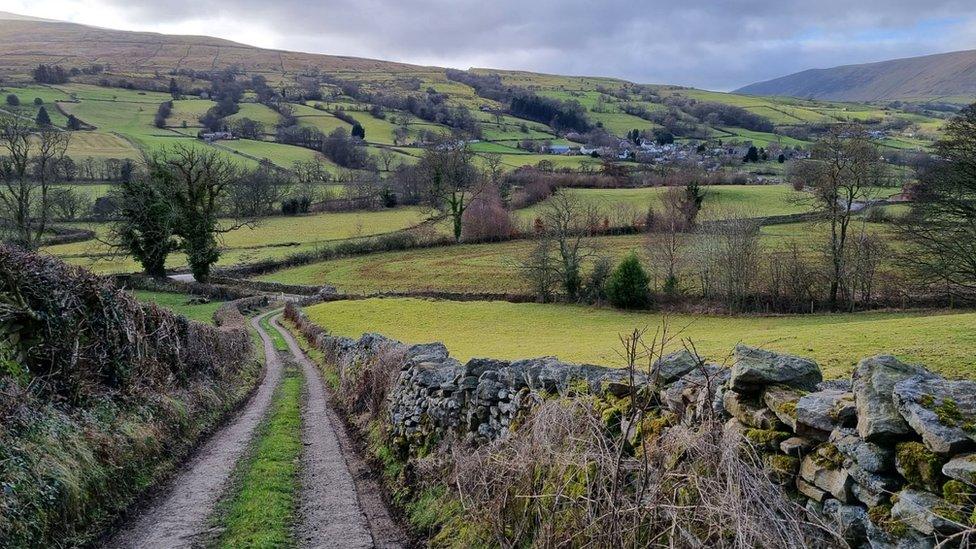
The postal path in the Swindale Valley near Dent, Cumbria, stretched nine miles, then continued over the fells into Wet Sleddale and back to Shap
It was while working on a previous book about corpse footpaths (routes used to carry coffins from isolated communities to cemeteries) that Alan first learned of postal paths.
He was talking with a farmer who told him about the "postman's path" on his land, a short-cut created in the early 19th Century.
The track had been improved by the farmer's relatives who created steps into a dry stone wall as the postman's daily clamber over it had knocked so many chunks out of it, they decided to make it easier to access.
"Since that first encounter I've spoken to a number of people casually referring to a postman's path, and I know it's naïve, but I thought the archives would have the original route cards but they don't," he says.
"I have discovered some from families and local history societies, but some of the posties will still be alive and I want to find them."
The 63-year-old says there was "an equal spread of men and women" doing the role and they were often disabled or war veterans.
One of them was Matt Bendelow who completed a daily round on one leg in Bowes, County Durham. Alan acknowledges it was a sizeable task for the veteran "who did a round which took me two days to do."
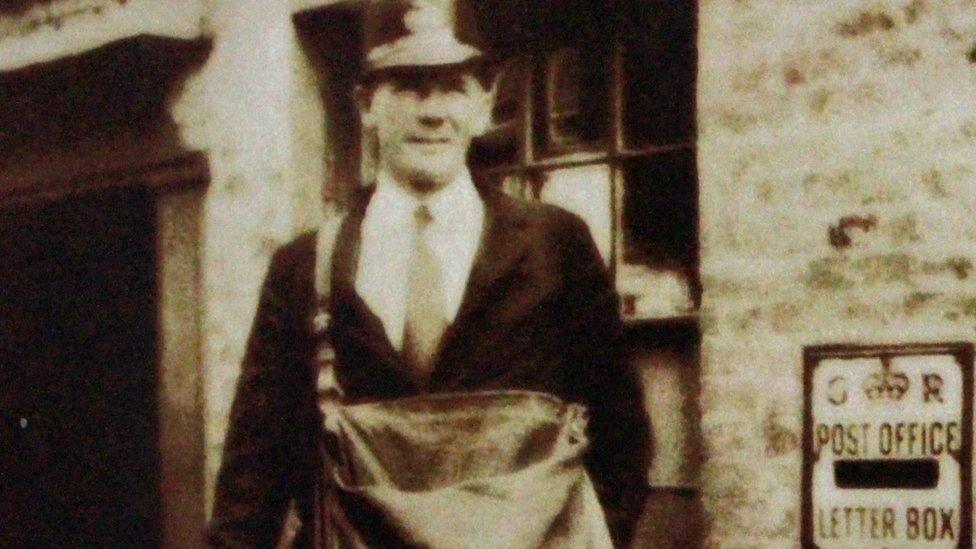
Simon Evans was the postman of Cleobury Mortimer from 1926-1939 - his daily round took his through the Rea Valley in south Shropshire
His research revealed the Post Office often provided rounds to veterans to help strengthen their muscles and build up their lung capacity, as in the case of Simon Evans who was gassed in the First World War.
A 16-mile-route, still bearing his name, follows his delivery round through the Rea Valley in Shropshire, from Cleobury Mortimer to Stottesdon.
It celebrates Mr Evans as a writer as well as a postman, as the journey he took throughout the seasons inspired him to pen four collections of stories and a novel.
Another route has also been turned into a tourist must-do on the Isle of Harris in the Outer Hebrides.
The original Postman's Path attracts thousands of walkers every year as it zig-zags 13 miles along the coast through abandoned villages before reaching Rhenigidale.
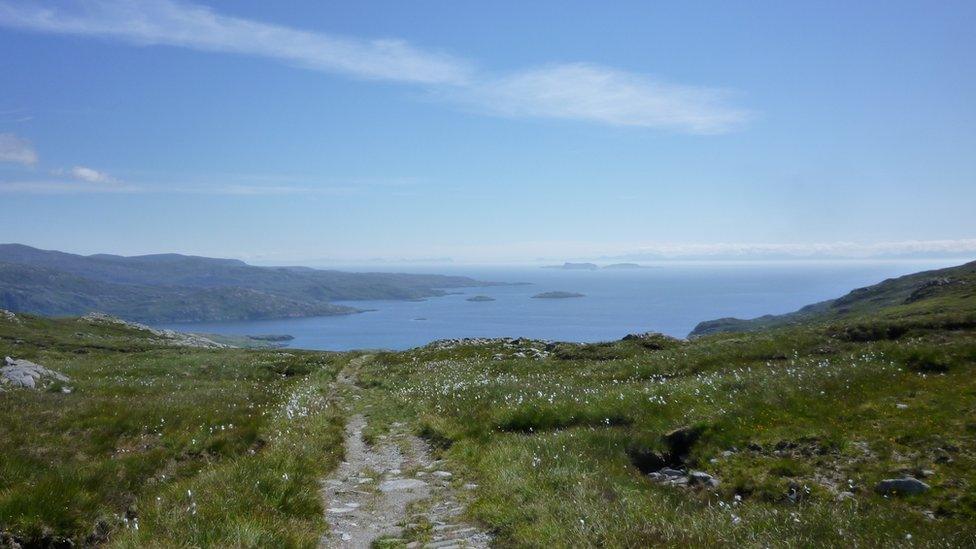
Thousands of people walk the scenic Postman's Path on the Isle of Harris every year
Victoria Harvey, VisitScotland's Outer Hebrides development manager, said: "Along the way, you can look out for sea and golden eagles with views out from Harris' lesser-known eastern coastline and the Shiant Islands in the distance.
"Visitors can slow down and take time to connect with the scenery and communities around them.
"It is important to enjoy these special places responsibly and protect historic routes like the Postman's Path for generations to come."
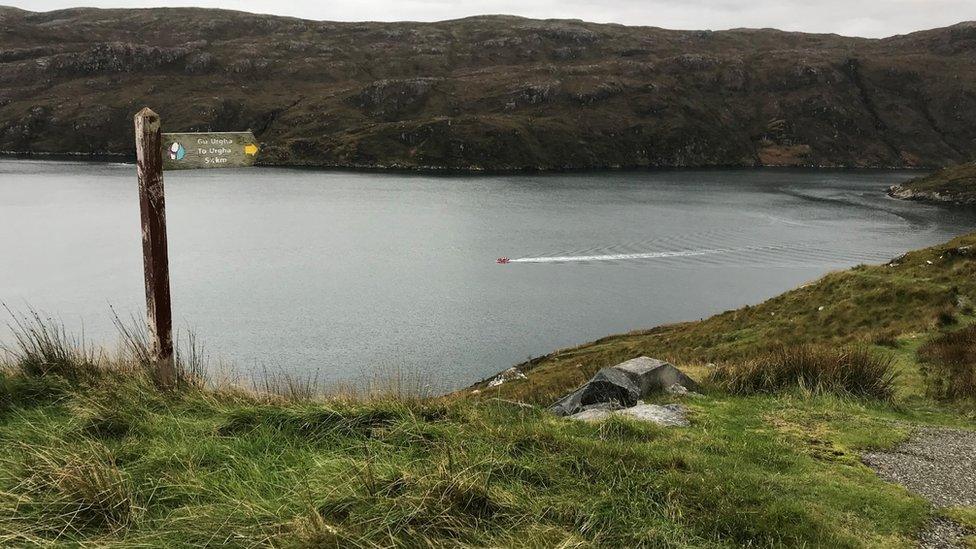
The route to Rhenigidale (Reinigeadal) zig-zags down The Scriob with a succession of hairpin bends
Alan believes more postal paths could become income generators across the UK, attracting walkers to the public rights of way.
"All of them are public footpaths because the Post Office was good at negotiating with landowners to get access to deliver the mail."

Annie Burrough who was postwoman in Holmrook, Cumbria in the 1960s.
While in less rugged counties posties used bicycles, walking in areas with rolling hills was an easier option, as early Post Office bikes came without gears.
Mail workers covered long distances on foot before vans became the ubiquitous means of delivery in the 1970s.
Among the writer's discoveries are Annie Burrough who was postwoman in Holmrook, Cumbria, in the 1960s.
She was based at Drigg Post Office in the west of the county and cycled her route in the early 1960s through Holmrook to Irton and Santon Bridge.
Some rural workers blew a horn, or rang a bell to notify villagers of their arrivals.
John Priestman, who delivered and collected post to Patterdale in the 19th Century, would sound a bugle as he approached the village in order to allow people time to finish composing their letters.
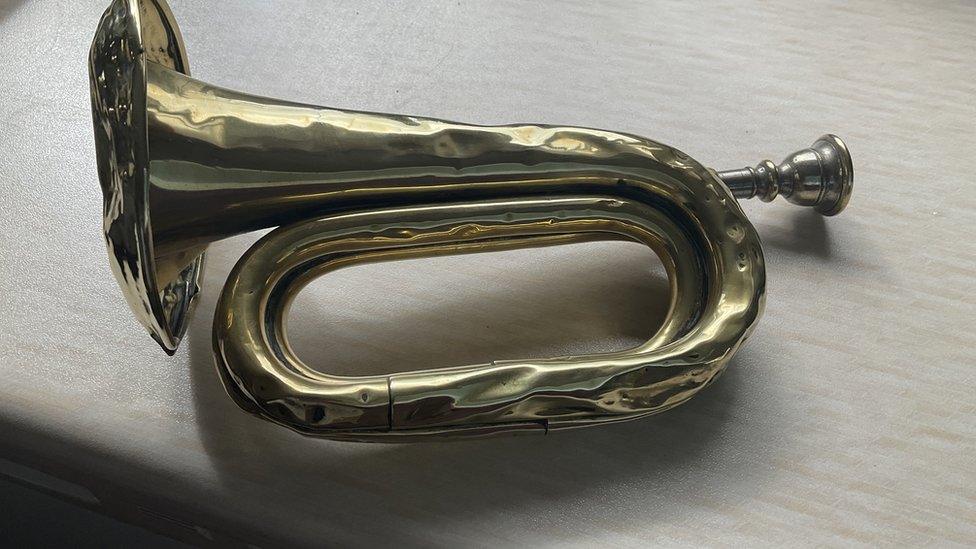
A blast of John Priestman's bugle once alerted villagers in Patterdale that the post was coming and as a sign he was ready to collect letters too
Alan says he enjoys "disappearing down a footpath no-one knows about" while researching his book.
"Some are so remote that people don't know they are there - they offer solitude and that is nice.
"I think part of it is just the nostalgia.
"We're reaching a time where the Post Office is changing and hand-written letters are few and far between.
"I think people hanker for the day when a friendly voice would shout out and a knock on the door came delivering the post," he said.

Follow BBC North East & Cumbria on Twitter, external, Facebook, external and Instagram, external. Send your story ideas to northeastandcumbria@bbc.co.uk, external.
- Published6 September 2022

- Published20 November 2021
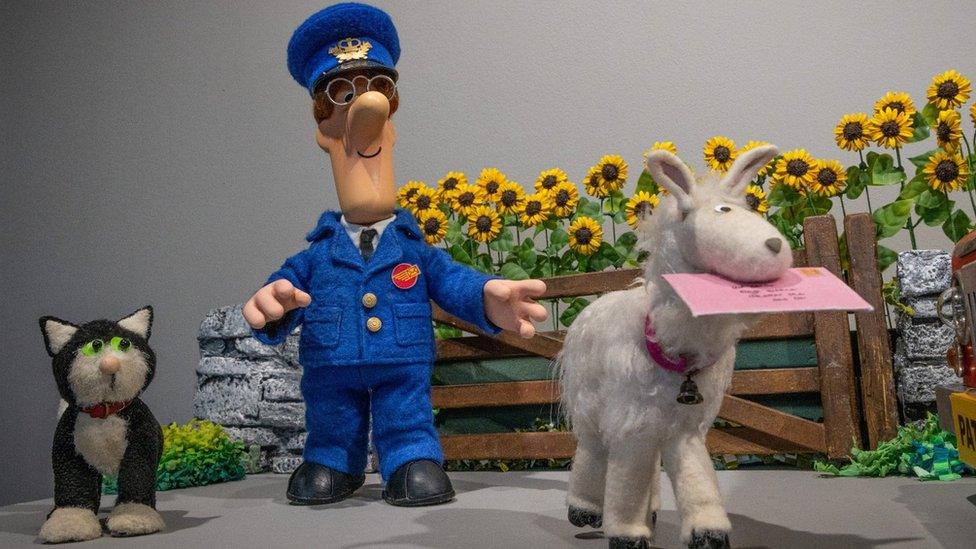
- Published11 April 2021
